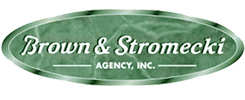No company owner wants to undergo a workers’ compensation audit, but they are a fact of life if you run a business and have employees.
Unfortunately, many audits don’t go smoothly and sometimes your insurer may make mistakes. Missouri-based Workers’ Compensation Consultants, which helps employers through the workers’ comp audit process, recently listed the 10 most common audit mistakes that insurance companies make.
The list highlights a common problem and how you can detect the mistakes to avoid being stuck with a massive audit bill. Insurance companies allow you to review the audit with your broker. If you notice that you have received an audit bill that is obviously overstated, you should contact us.
Here are the things to look for when reviewing an audit by your insurance company:
Wrong class code – Misapplication of job classifications occurs in many workers’ comp audits. With hundreds of job classes to choose from, mistakes can happen. Talk to us and review your old policies to see if any of your class codes have changed.
X-Mod is changed – After your insurer finishes the audit, it will use the information to calculate your premium. When that happens, it has to include your X-Mod to get the right rate. But sometimes the insurer may use an incorrect X-Mod. Check carefully.
Subcontractors are counted – Sometimes insurers will include subcontractors as employees, which results in a new audit bill to account for the additional “employees.” But if they are genuine subcontractors, they should not be counted. Often, uninsured contractors will be included as employees. Make sure to use insured contractors only.
Disappearing credits – Most policies will have some sort of premium credits or other modifiers. Sometimes during audits, the insurer will remove them when recalculating the premium they think you owe. Watch out for missing credits and other modifiers if you get an audit bill, like:
- Premium discount
- Schedule credits
- Deductible credits
- State-specific credits
Audit worksheets missing – If the auditor fails to provide you with audit worksheets, which are used to compile your payroll and other audit information, you should ask to check their work. They will provide you with the information you need to carry out such a check.
Your rates changed – The rates you are charged at the beginning of your policy period must remain the same for the entire policy period. If your base rates have changed, the insurer may have made a mistake.
Separation of payroll – Depending on your industry, you may or may not be able to split your employees’ payroll between job classifications (like cabinet installers and sheetrock hangers). This is a pinch point when errors can occur. If the auditor says you are not allowed to split job classifications even though you have in the past, your audit may be in error.
Unexpected large premium due – If you get a significant bill for your insurance company after your audit, the auditor may have made mistakes, particularly if you know that your employment has remained relatively stable and you’ve had no significant claims, if any. If it seems out of whack, call us.
Payroll data doesn’t match – If there is a discrepancy between your payroll data and what you see on the audit, a mistake may have been made. Try to match the payroll on the audit with that generated by your accountant. If the insurer made a mistake, you could end up paying for phantom payroll numbers.
No physical audit – There are three types of audits:
- Mail audit
- Phone audit, and
- Physical audit
The mail and phone audits are prone to errors since neither you nor your staff likely have any experience in premium auditing. If you have a big bill after a mail or phone audit, mistakes could have been made.
